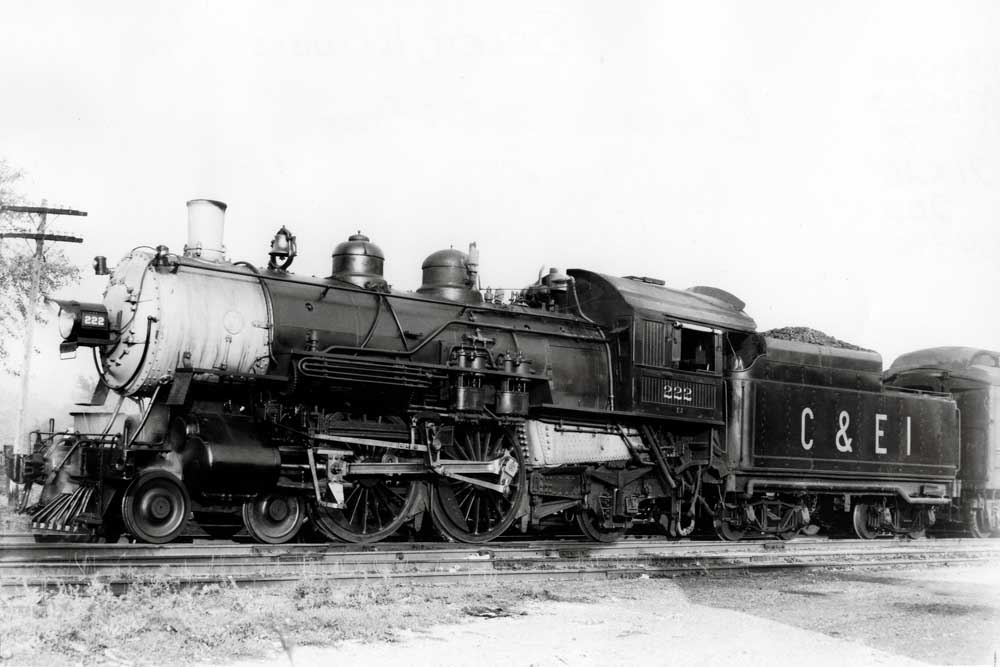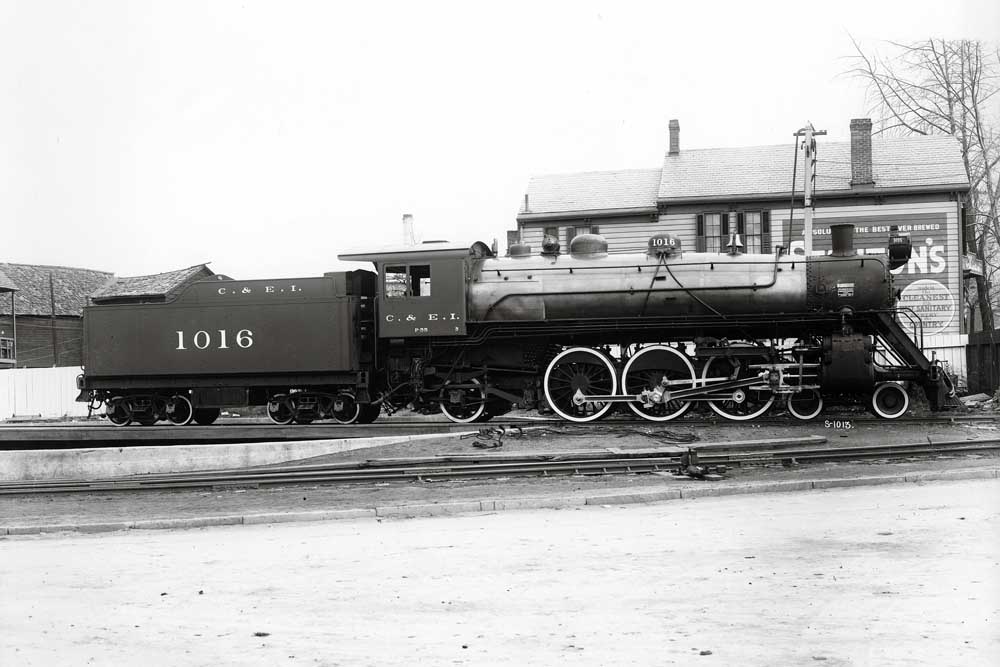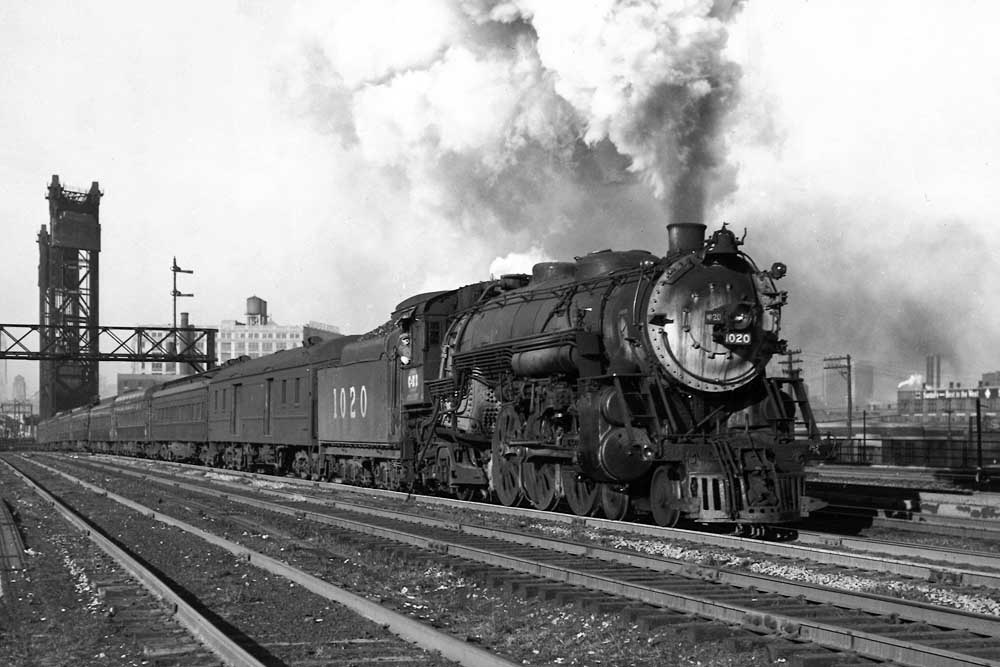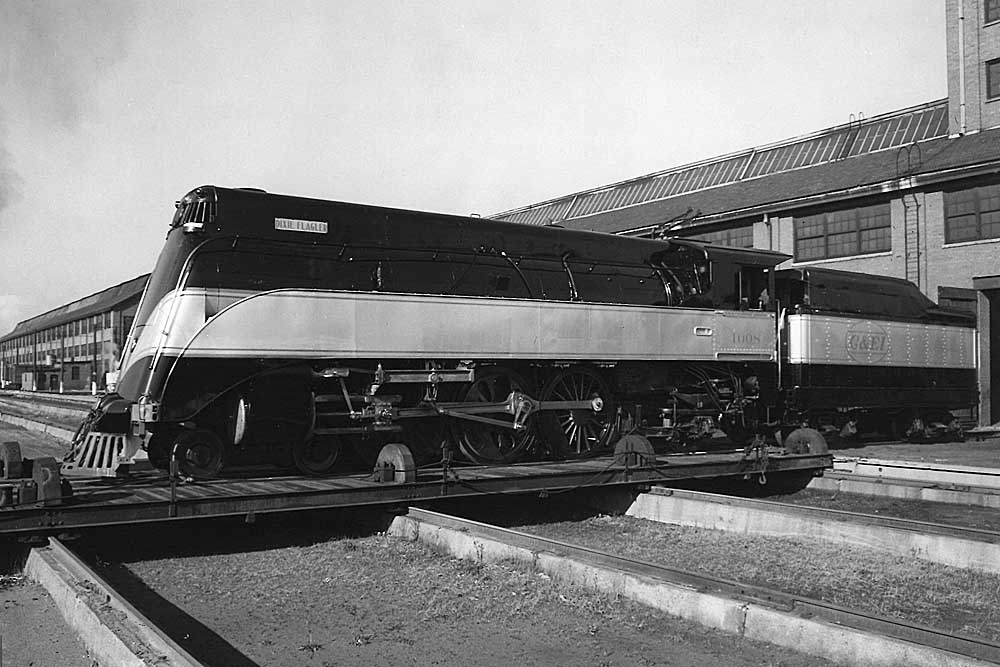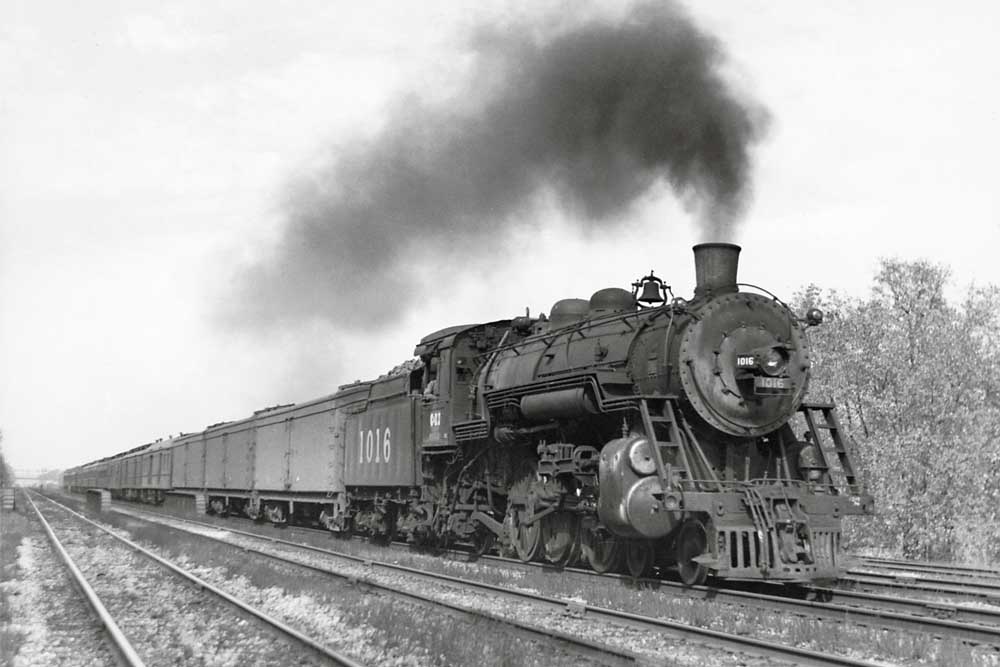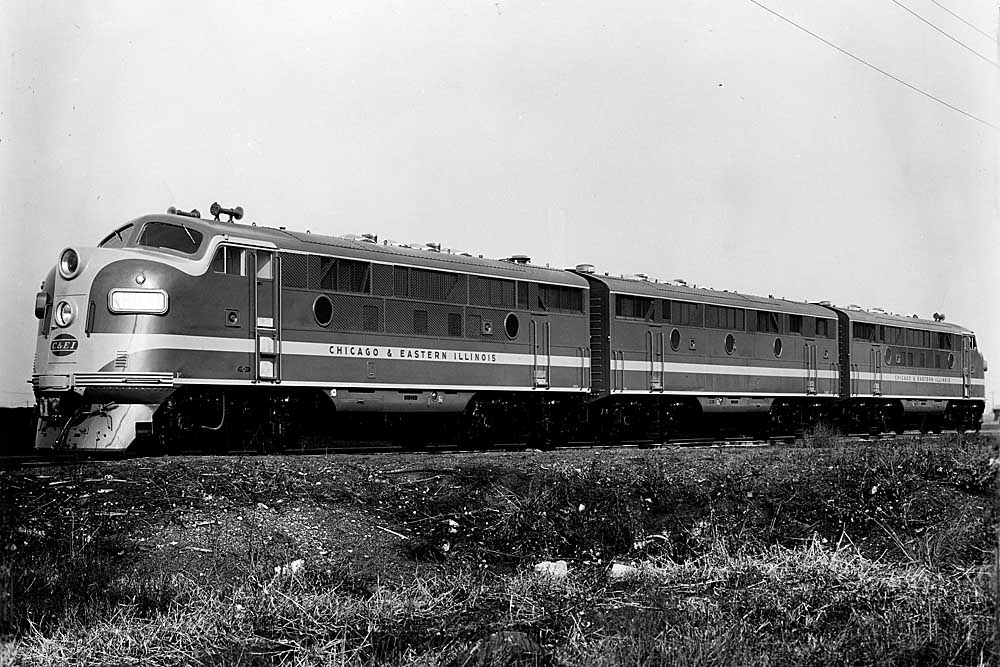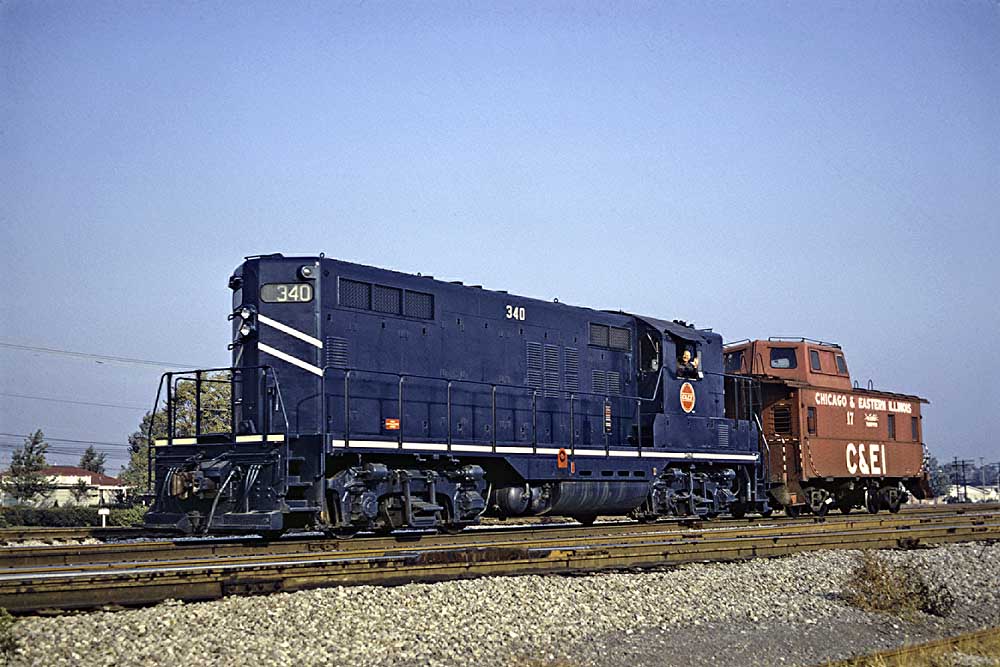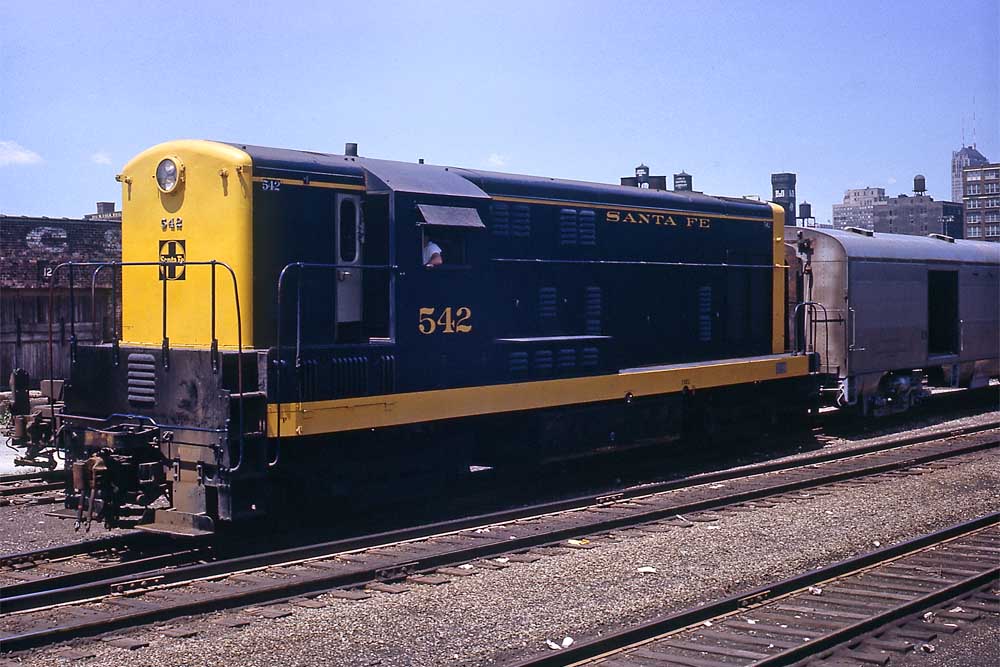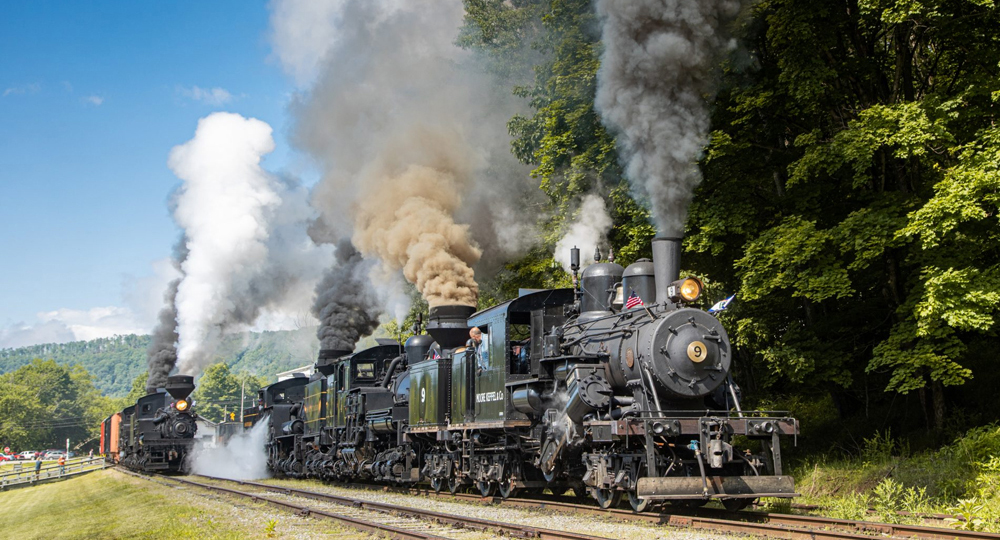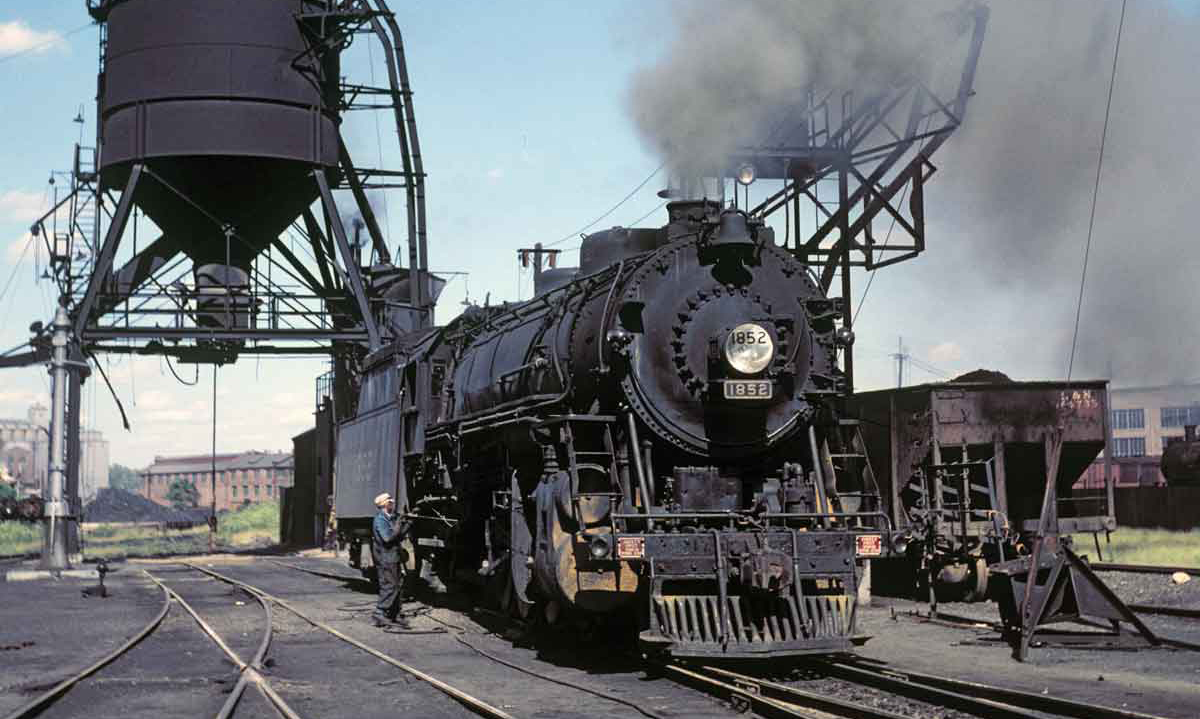C&EI’s last new pre-Missouri Pacific power, 31 GP35s, had dynamic braking. Its first six-motor diesels were 14 SD40-2s in 1974 in MoPac blue. Louis A. Marre collection
A photo gallery of steam and diesel locomotives in service on this memorable Midwest road
Chicago & Eastern Illinois locomotives served the road well through many decades of operation.

Atlantic 222 survived until 1947. Rebuilding has given the engine Walschaerts valve gear and a pair of cross-compound air pumps—a single pump would be enough for any train the 4-4-2 could pull—but wood cab and archbar tender trucks remain in this 1940 view. John B. Allen photo


Pacific 1016 was one of a pair built by Schenectady in 1913, the road’s only Alco 4-6-2s. Alco photo, C. W. Witbeck collection


Any resemblance of C&EI steam to Frisco’s is intentional, as during 1909-13 under SLSF control, the roster was overhauled. K-2 Pacific 1016 leads the Dixie Express out of Chicago in 1946. Robert R. Malinoski photo


Baldwin-built 4-6-2 No. 1008 displays its 1940 streamlining for service on the Dixie Flagler between Chicago and Miami. Chicago & Eastern Illinois photo


C&EI’s best-known engines were the six Lima heavy Pacifics of 1923. Number 1020 displays latter-day improvements—a cast, drop-coupler pilot and a full set of Boxpok drivers—as it accelerates the Dixie Limited out of Chicago on a winter day in 1947. Donald R. Deneen photo


C&EI’s Florida varnish “compared favorably” with star Santa Fe among the seven roads at Chicago’s Dearborn Station, but nameless No. 1 to Evansville was a lesser light. With ATSF stock as a backdrop, the local departs in April 1957 with an NC&StL baggage car behind the FP7-E7 duo. Dan Pope collection


Chicago & Eastern Illinois 1203 is a Phase IIb F3, with low radiator fans and screened side panels between portholes. EMD photo


Bulwarks of C&EI’s early road-diesel roster were 33 F units and 30 GP7s, two of which are on a southbound transfer in Chicago on June 25, 1961, as seen from Monon’s Thoroughbred. J. David Ingles photo


C&EI’s last new pre-Missouri Pacific power, 31 GP35s, had dynamic braking. Its first six-motor diesels were 14 SD40-2s in 1974 in MoPac blue. Louis A. Marre collection


MoPac instituted a “C&EI buzzsaw” emblem in 1963, evidenced on re-numbered GP9 340 towing Oaklawn-built caboose 17 in October 1969. John S. Ingles photo

C&EI was a coal-hauling railroad and, other than some early switchers, stuck with steam through World War II. Three E7s and a bunch of F3s made quick work of dieselizing the line from 1946 onward, with the last steam operating in 1950. The Missouri Pacific assumed control of the C&EI in 1967, and the railroad was formally merged into the Missouri Pacific in October 1976.






